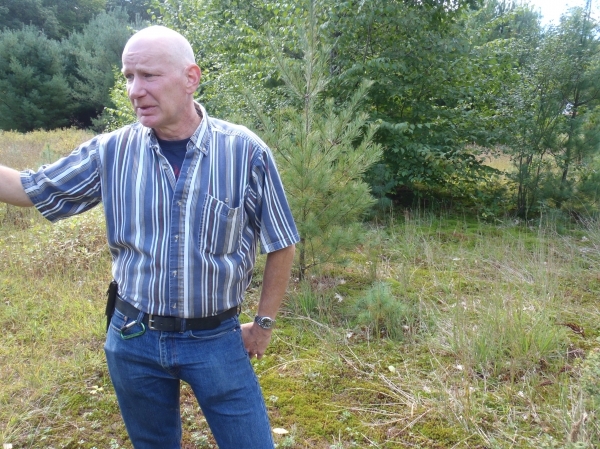NEWFANE — During winter's cold spells, NewBrook Elementary School's outdated heating system had a hard time keeping up: Some classrooms were stiflingly warm, while others remained chilly.
And the boiler that fueled that system was alarmingly inefficient, gulping about three gallons of oil each hour.
All that is about to change, as NewBrook is in the process of installing a sophisticated new air-to-air heat pump system for heating and cooling. The system, along with a new backup propane-fueled boiler, has eliminated the school's need for heating oil.
Also, NewBrook's board has entered into a 20-year contract with a developer to build a 500-kilowatt solar array on site next year. The array will result in electric-bill discounts as well as opportunities for other area districts.
Taken together, the HVAC and solar projects are expected to save taxpayer money and make NewBrook much more “green” while also providing new educational opportunities for students.
“We want the kids to say, 'Hey, this is where we get our energy from,'” said Ken McFadden, school board chairman.
NewBrook serves the towns of Newfane and Brookline, and voters in those towns didn't immediately endorse the school's energy makeover. The proposals were contentious mostly for financial reasons, as the school board asked for permission to borrow up to $330,000 and told residents to expect a tax hike to repay that five-year loan.
In June 2014, residents voted against the solar project and approved the new HVAC system. That was a complicated result because officials had pitched the projects as interrelated: The solar array would cut the school's electric costs, while the new air-to-air heating and cooling system would run on electricity rather than oil.
To make matters even more complicated, the school board subsequently received a petition for reconsideration of the HVAC vote.
But it was all sorted out in October, when voters overwhelmingly approved both projects. One key difference was a revised solar proposal that required no financial commitment from the school: The array's developer will assume all construction and maintenance costs and will lease the affected land from NewBrook.
While the solar array isn't slated for completion until sometime in 2016, the school's HVAC upgrade started in July.
Bradford-based ARC Mechanical Contractors got the heat pump job for $252,470 and also landed a $33,770 contract to install a new backup boiler that runs on propane. That boiler will be needed only on the coldest days, when temperatures drop below minus-4 degrees, officials said.
It's a major undertaking to insert a heat-pump system into an existing building, and Principal Scotty Tabachnick praised the contractor and school staff for getting much of the infrastructure work done before students returned.
“You wouldn't believe the work they were doing this summer,” Tabachnick said. “This building was completely torn apart.”
Some exterior HVAC work still remains, however, including installation of the propane tank.
“I think we'd all be more comfortable if everything was done, but I'm confident that we'll have everything done before heat is needed,” said Victor “Bud” DeBonis, Windham Central Supervisory Union chief financial officer.
The air-to-air heat pump system works like a refrigerator compressor to move heated and cooled air depending on the school's needs.
Once the system is up and running, Tabachnick expects a much more efficient and stable heating system, and he also believes the upgrades will provide a more comfortable learning environment for NewBrook students.
“We're having a new air-handling system installed on a wing that didn't previously have one, which is where the classrooms are,” Tabachnick said. “So in the wintertime ,when you can't have the windows open, they're going to have fresh air.”
The NewBrook solar project has been awarded to California-based SunEdison, which bills itself as the “largest global renewable energy development company.” SunEdison says it has installed more than 2 gigawatts of solar-power production worldwide, and its task at NewBrook will be to develop a 500-kilowatt array on land behind the school.
McFadden says the project will not impact any of the school's athletic facilities, and he notes that the site is partially screened by a stand of tall trees.
“When people think about putting solar in, they should really think about, how is it going to affect the landscape – not even so much the landscape, (but) the view,” McFadden said. “One reason we went forward with a project that big was because we have space back there that's not being used. It's sitting idle.”
NewBrook is slated to receive a $26,000 annual lease payment from SunEdison, and officials also anticipate a roughly 20 percent savings on the school's electric bill. Given the array's power output, there will be opportunities for other schools, municipalities and private citizens to sign on as members of a group net-metering agreement, thus realizing utility-bill savings themselves.
“I'll be working with SunEdison, particularly to talk to the other school boards,” DeBonis said.
He credits the NewBrook board and a volunteer Energy Committee for putting in years of work to bring both the HVAC and solar projects to fruition. In addition to conducting extensive research, those same advocates also took heat from those who opposed the projects.
“There's a disadvantage to being the leader, unfortunately ... it's fellows like Ken and other members of the board who took the risk to get into this early,” DeBonis said. “I think the acceptance of solar power and its benefits, both ecologically and financially, is much better known than when these folks started their process.”
